Microsoft’s vast suite of services—including Office 365, Azure, and Windows—is foundational to the productivity of countless businesses. But with great popularity comes great risk. Microsoft’s ecosystem has increasingly become a favorite target for cybercriminals, who employ ever-evolving tactics to steal data, compromise systems, or carry out fraudulent transactions.
To safeguard your business, understanding the most common Microsoft-related cyber threats is essential.
1. Phishing Attacks
Phishing remains one of the most successful methods for cybercriminals to infiltrate systems. These attackers often create emails and websites that closely resemble Microsoft platforms, such as Outlook, OneDrive, or Teams. A typical phishing attempt may involve a fake “password reset” email, seemingly from Microsoft Support. These messages may use familiar fonts, logos, and design elements to trick users into clicking a link that leads to a fake login page. Once credentials are entered, attackers have full access to accounts and sensitive company data.
2. Business Email Compromise (BEC)
Microsoft 365 email accounts are a prime target for business email compromise scams. In a BEC scenario, hackers gain access to a trusted email account, such as that of a company executive or vendor. They then send emails requesting payroll changes, wire transfers, or sensitive data. Because the messages come from legitimate inboxes and often contain context-specific information, employees may comply without suspicion, leading to financial and data losses.
3. Exploiting Microsoft Office Macros
Macros in Microsoft Office products like Word, Excel, and PowerPoint are powerful tools for automation. However, they can also be weaponized. Hackers often embed malicious macros into seemingly innocent files. When opened, these macros can silently execute malware downloads, corrupt data, or give remote access to the attacker. These documents are frequently delivered via email attachments or downloads from untrusted websites.
4. Ransomware Targeting Windows Systems
Windows-based systems continue to be the main avenue for ransomware attacks. Cybercriminals scan for known or newly discovered (zero-day) vulnerabilities and use them to install malware that encrypts data. Victims are then asked to pay a ransom in exchange for a decryption key. In many cases, the encrypted files are critical to business operations, putting pressure on companies to pay up or suffer significant downtime and data loss.
How to Protect Your Business
While Microsoft equips its platforms with many built-in security features, safeguarding your digital environment requires a proactive and layered approach. Here are essential actions businesses can take:
Enable Multi-Factor Authentication (MFA): MFA significantly lowers the risk of unauthorized access by requiring a secondary verification method, such as a phone notification or authentication app.
Keep Software Up-to-Date: Enable automatic updates and regularly check for patches on Microsoft products and operating systems to fix known vulnerabilities before they can be exploited.
Educate and Train Employees: Regular cybersecurity awareness training is key. Employees should be able to recognize phishing emails, suspicious websites, and other forms of cyber deception.
Back Up Your Data Securely: Use secure and regularly tested backups that are stored offsite. This ensures your data is recoverable in case of ransomware or data corruption.
Adopt Passwordless Authentication: Microsoft supports passwordless sign-in through biometrics and device-based security. This modern approach reduces the risk of compromised passwords.
Practice Email Vigilance: Be suspicious of unexpected or urgent requests received via email, especially those containing links or attachments. Always verify the sender and check URL destinations before clicking.
Disable Macros by Default: Unless absolutely necessary, macros should remain disabled. Open macro-enabled documents only from verified sources.
Download Software from Trusted Sources: Avoid downloading files or software outside of Microsoft’s official store or verified partners. Unofficial sources are more likely to contain malware.
Cytranet Can Help Secure Your Microsoft Environment
Consider partnering with a trusted managed service provider like Cytranet. As an expert in IT strategy and cybersecurity, Cytranet offers comprehensive protection for businesses using Microsoft technologies.
Our Fractional CIO service provides strategic guidance tailored to your company’s goals, while our expert technical teams monitor, maintain, and secure your environment. From implementing advanced threat protection to performing regular audits and patches, Cytranet ensures your company stays ahead of cyber threats.
We don’t just wait for problems to arise—we work proactively to minimize your risk, so you can focus on growing your business with peace of mind.
Schedule a consultation with Cytranet today to explore how our cybersecurity and IT services can protect your Microsoft ecosystem and your organization as a whole.


